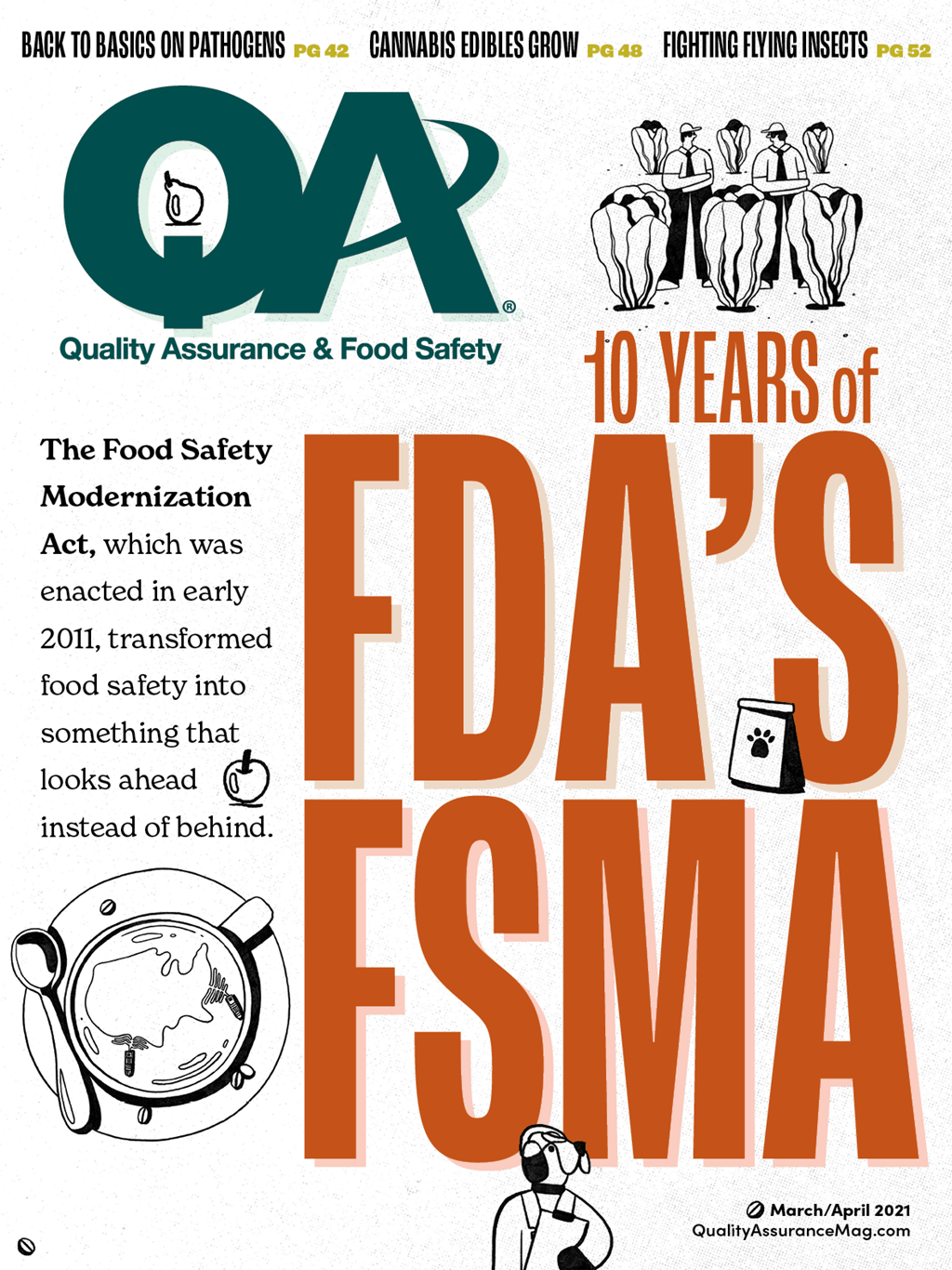

Although animal foods had previously been regulated at the state and federal levels in various ways prior to FSMA, the regulation heralded new mandates for preventive controls and adherence to GMPs that did not previously exist for animal foods — including pet food. Most pet food manufacturers followed the guidance of the American Feed Control Officials (AAFCO), however AAFCO had no legal authority over the food or its manufacturers.
With FSMA’s Preventive Controls for Animal Foods Rule, animal food became subject to federal regulation holding it to the same standards as human foods — for the first time. This included adherence to GMPs and the development of a written Food Safety Plan that included a hazard analysis and risk-based preventive controls to minimize or prevent the hazards.
The new rule has had a significant impact on the animal foods sector, particularly smaller businesses. But, like many human food facilities, some larger pet food manufacturers had implemented HACCP prior to the advent of FSMA, so were well-prepared for the transition. As explained by Nestlé Purina PetCare Vice President of Quality Assurance Chris Archer and former Director of Food Safety Richard Driggs (now Zanesville, Ohio, factory manager), “Our comprehensive approach to food safety was well established ahead of FSMA, embracing the principles of HACCP, and we remain committed to continuous improvement. Our company was founded with safety as one of its key principles nearly 100 years ago. To this day, food safety remains our highest priority.”
To further Purina’s perspective on the rule and the transition, QA conducted a Q&A with the two.
QA: What were your thoughts when you became familiar with the PC/Animal Foods Rule?
Purina: The implementation of FSMA has helped further raise the bar for pet food safety, and that’s a good thing for pets, pet owners and pet food makers. To members of the Pet Food Institute (PFI), representing 98% of U.S. pet food, food safety is not a competitive advantage. Industry-wide, the more compliance we see, the better the outcome for all involved.
QA: What changes did Purina have to make for compliance?
Purina: The biggest changes we saw focused more on consistent terminology, points of emphasis and really standardizing the regulations. It helped create a baseline of understanding for our team and others in the industry. PFI and the National Grain and Feed Association (NGFA) were instrumental in education and implementation; we’re grateful for their leadership.
QA: Included in the rule are requirements for a written Food Safety Plan and a preventive controls-qualified individual. How did this impact your existing programs?
Purina: The new rule meant building on existing competencies. Purina’s quality assurance and safety protocols are some of the highest in the pet food industry, and we hold ourselves to very strict standards. The introduction of Prevent Controls Qualified Individual (PCQI) certifications was important to establish and implement the specifics of FSMA, outlining a well-defined process which simplified and focused our HACCP critical control points. Hundreds of our Purina associates completed the PCQI certification to ensure that each of our manufacturing facilities across the U.S. has multiple certified associates at any given time. A few of our team leads even became lead instructors so that we could bring the training into our locations and complete it efficiently.
QA: What impact do you see the PC for Animals Food Rule having had on animal/pet foods in general?
Purina: The most significant impact was to raise the food safety bar for the entire industry so that pet owners can have confidence in the products they feed their beloved pets. With the leadership of PFI, as an industry we were able to raise the bar for everyone and provide tools and trainings required for greater compliance and better overall food safety standards.
QA: What do you see as the most positive industry impacts of the rule? Are there any negatives?
Purina: The introduction of FSMA not only established a high bar for food safety, it also nurtured deeper understanding from regulators so when state and federal inspectors conduct site visits, there is now a clear vision of what is being observed and what it means in relation to the established rules. FSMA defined what modern food safety should look like, which is important so that all parties involved remain focused and committed to collectively keeping pet food safe.

Explore the March April 2021 Issue
Check out more from this issue and find your next story to read.
Latest from Quality Assurance & Food Safety
- SGS Unveils PFAS Testing
- Mondelēz International to Acquire Majority Stake in Evirth
- Bay State Milling Acquires Montana Gluten Free
- Hershey Signs Long-Term Agreement with Cocoa Cooperatives Aimed at Improving Farmer Income, Farm Resiliency
- A Q&A on STEC Testing
- Specright Launches SpecGPT and SpecIDP
- Veralto Acquires TraceGains
- Once Upon a Farm Launches Partnership with Equitable Food Initiative





